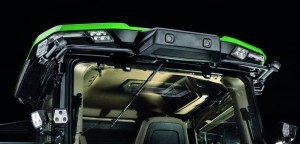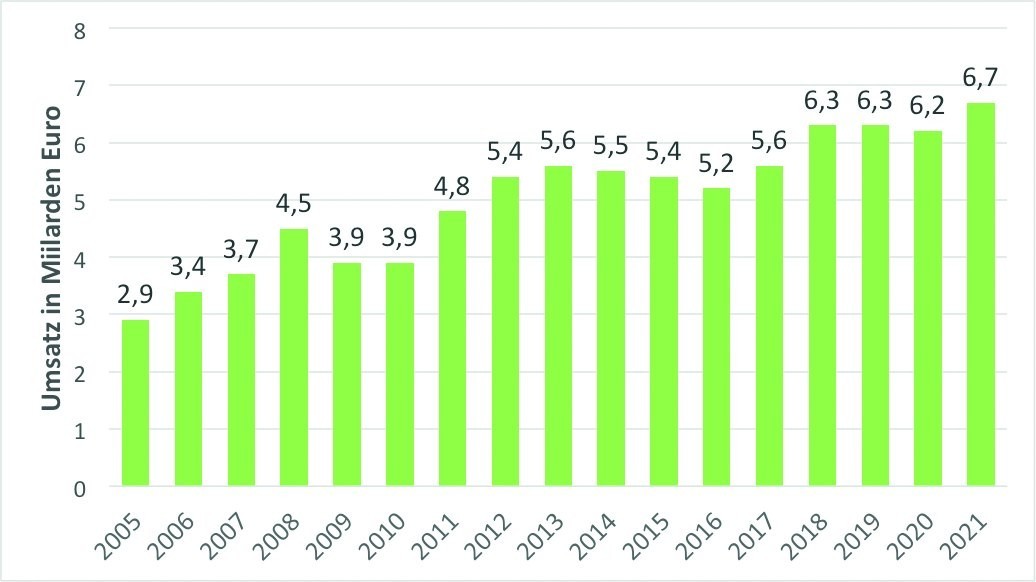Global agriculture is facing a major challenge: by 2050, the world population will grow from the current 7.8 billion people to around 10 billion. Providing food on roughly the same amount of agricultural land will require significant increases in productivity in the face of changing climatic conditions. In addition, there is a shortage of skilled workers, not only in the manufacturing industry or the skilled trades, but also in agriculture.
Many of us are familiar with the very large areas of arable land in the northern and eastern German states that are calling out for automated processing. A lot has happened in this often overlooked niche market in recent years. The trend towards sustainable but also effective agriculture has brought a lot of sensor technology and electronic control to the machinery. Whereas in the past only a rough mechanical distribution of seeds, fertilizer and irrigation took place, today it is all about specific, individually adapted supply of material and resources for an optimal yield.
Artificial intelligence and machine learning
Sensor technology with cameras and image analysis as well as LiDAR (Light Detection and Ranging) and radar is currently changing agriculture. Artificial intelligence and machine learning now make it possible, for example, to differentiate between cultivated plants and weeds during irrigation, thus saving scarce resources.
John Deere is the world's largest agricultural machinery manufacturer with a turnover of 40 billion dollars. The company has equipped tractors with an RTK GNSS system, which enables the driver to automatically drive the tractor with an accuracy of less than 5 cm using sensors and computer vision(Fig. 1) This is extremely precise compared to a typical GPS-enabled smartphone, with an accuracy of only +/- 5 m in the open air.
GNSS is the abbreviation for 'global navigation satellite system', a collective term for satellite-based positioning on earth. These include NAVSTAR GPS (Global Positioning System) of the USA, GLONASS (Global Navigation Satellite System) of the Russian Federation, Galileo of the European Union and Beidou of the People's Republic of China.
RTK for 'Real Time Kinematic' is the land-based correction signal with which the satellite position is improved to an accuracy of 1 cm.
 Fig. 2: Autonomous 8R tractor that can continuously cultivate over 325 hectares of land in 24 hours
Fig. 2: Autonomous 8R tractor that can continuously cultivate over 325 hectares of land in 24 hours
24h/7d Autonomous on the field
 Fig. 3: Sensors on the cab of the autonomous 8R tractor, including 6 stereo camera pairs for 360-degree environment monitoring12hours in the cab and driving a tractor at a speed of around 10 km/h is no fun in the heat and cold. Spreading fertilizers or weedkillers for hours on end is certainly not good for the tractor driver's health either.
Fig. 3: Sensors on the cab of the autonomous 8R tractor, including 6 stereo camera pairs for 360-degree environment monitoring12hours in the cab and driving a tractor at a speed of around 10 km/h is no fun in the heat and cold. Spreading fertilizers or weedkillers for hours on end is certainly not good for the tractor driver's health either.
Depending on the type of crop a farmer grows, it takes 7-15 passes in a field to achieve a successful harvest. This requires a lot of working time, which ties up the farmer and his employees.
John Deere has now launched an autonomous 8R tractor that can cultivate over 325 hectares of soil in 24 hours(Fig. 2).
Six pairs of stereo cameras monitor the surroundings of the autonomous tractor in 360° mode. AI evaluates the images, detects obstacles and can calculate the distance. AI evaluates the recorded images very quickly, in around 100 milliseconds per pixel(Fig. 3). The autonomous tractor continuously checks its position and works with an accuracy of less than 2.5 cm.
In order to use the autonomous tractor, the farmer must transport the machine to the field conventionally. The autonomous tractor is then controlled and adjusted via the Operations Center Mobile on the smartphone. It provides access to live videos, images and data and allows the farmer to adjust the speed and settings of the processing machines. If the work result is not correct or if faults occur on the tractor, the farmer is notified and can make adjustments remotely.
Europe's autonomous response
 Fig. 4: The AgBot, the autonomous tractor without a driver's cab and steering wheel from Claas/AgXeed. The sensor system consists of a LiDAR at the top center and ultrasonic sensors. A rear-facing laser scanner monitors the cultivated field surface and adjusts in real time according to Thecompany Claas in Harsewinkel, Westphalia, is Germany's largest agricultural machinery manufacturer with a turnover of €4 billion in 2020. This company is also focusing on the trend towards autonomous field cultivation, which is driven by a shortage of skilled workers and the pressure to increase productivity. That is why it has invested in the start-up AgXeed from the Netherlands in 2021. The young company wants to offer an autonomous robot in series production as early as this year.
Fig. 4: The AgBot, the autonomous tractor without a driver's cab and steering wheel from Claas/AgXeed. The sensor system consists of a LiDAR at the top center and ultrasonic sensors. A rear-facing laser scanner monitors the cultivated field surface and adjusts in real time according to Thecompany Claas in Harsewinkel, Westphalia, is Germany's largest agricultural machinery manufacturer with a turnover of €4 billion in 2020. This company is also focusing on the trend towards autonomous field cultivation, which is driven by a shortage of skilled workers and the pressure to increase productivity. That is why it has invested in the start-up AgXeed from the Netherlands in 2021. The young company wants to offer an autonomous robot in series production as early as this year.
The tractor called AgBot does completely without a cab or driver(Fig. 4). It drives in a dead straight line and perfectly on connection. The cultivator is lifted just as precisely at the headland and replaced at exactly the right point after turning. The cultivator is used for non-turning soil cultivation, which is used to loosen and crumble the soil as well as to control weeds and incorporate organic materials into the soil.
At a speed of 13 km/h, it works one path after the other. The autonomous AgBot does not need a cab or a sprung front axle. Thanks to the diesel-electric drive, it was possible to dispense with a classic gearbox, as a speed range of 0 to 13.5 km/h is sufficient. The machine is driven exclusively on the field, with road transportation being carried out by low-loader. Thanks to the modular design of the drive units, the diesel engine can also be easily replaced by alternative drive types such as a battery or fuel cell in the future.
While a tractor with a driver can only work efficiently for ten to twelve hours per shift, the AgBot can be used for 20 hours at a time. In addition, the machine's system calculates the optimum processing route after entering the digital area maps. According to the AgXeed team, the bottom line is that this results in a 70% saving in working time - primarily because a driver is no longer required, freeing up personnel capacity.
The use of an autonomous machine can already pay off for arable farms with an area of 200 hectares, as long as optimal capacity utilization of at least 800 arable hours per year is ensured.
Growth market for highly automated agricultural machinery
The German agricultural machinery market amounted to around € 6.7 billion in 2021(Fig. 5). The introduction of highly automated and autonomous machines in agricultural technology, especially in the field of soil cultivation, continues unabated. It is assumed that the global market for these machines will increase from USD 7.6 billion in 2020 to USD 20.6 billion in 2025. An annual growth rate of around 22.8 % is assumed. The number of machines in use has also reached a considerable level. According to manufacturers, almost 2,000 field robots were already in use in 2020, with this figure spread across a total of 28 manufacturers and 31 different machine models.
 Fig. 5: Turnover of agricultural machinery in Germany in € billion
Fig. 5: Turnover of agricultural machinery in Germany in € billion
In a nutshell
- Global agriculture currently has to feed 7.8 billion people. By 2050, the world's population is expected to rise to 10 billion without any significant change in the amount of agricultural land.
- A shortage of skilled labor and the need for significant increases in productivity also require automatic and autonomous processing machines in agriculture.
- The market for automatic and autonomous processing machines is expected to grow from USD 7.6 billion in 2020 to USD 20.6 billion in 2025. This corresponds to an annual growth rate of 22.8 %.
LiDAR, radar and ultrasonic sensors are state of the art for semi-automated and automated driving in cars. Quietly and unnoticed, this technology has now also found its way into agriculture. Speeds of up to 15 km/h, use on private land and a lack of traffic congestion may even make it somewhat easier to use semi-autonomous vehicles there. On the other hand, there are higher demands on the processing machines, which have to detect weeds and dose fertilizers only at the crops or place seeds with centimetre precision.
Large agricultural machinery manufacturers such as John Deere in the USA or Claas in Germany have cooperated with or taken over small innovative start-ups and thus brought autonomous technology on board.
I wish you a strong start to the second half of the first quarter.
Best regards
Yours
Hans-Joachim Friedrichkeit
contact
F


